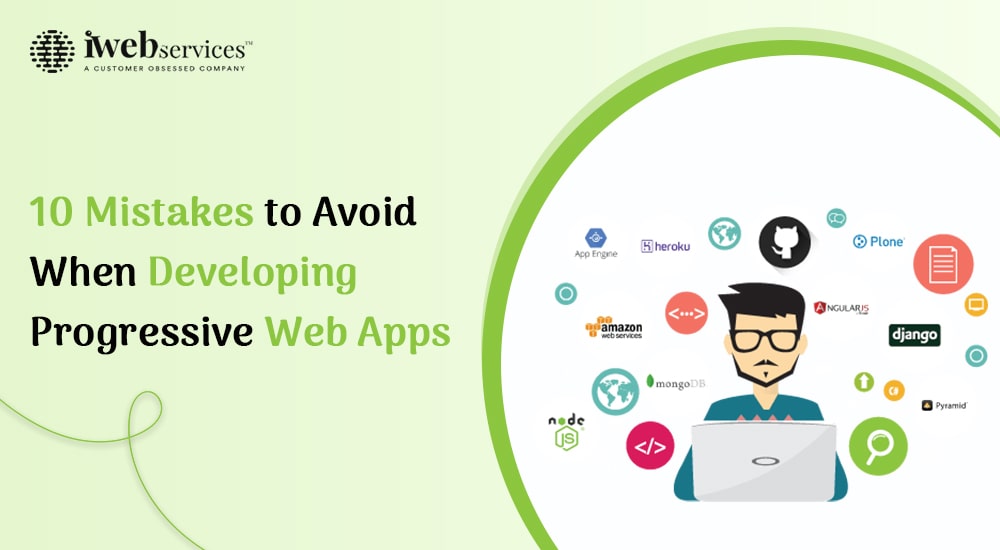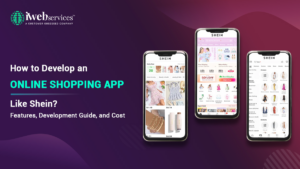“Why isn’t my app successful even if it follows all of the necessary progressive web app development procedures?” It is a relevant question that every app developer has on their mind. If you find yourself in this predicament, it’s most likely because you neglected to consider important elements like app visibility, target audience, and other critical functionalities.
Even if you have a dedicated, loyal, and motivated crew, ignoring such critical criteria will always result in app failure. Instead of expanding your app’s functionality, check for typical mistakes you should not have made during the progressive web app development process.
Complicating it
“Simplicity is the ultimate sophistication.”
However, the phrase of Leonardo Da Vinci applies to a wide range of topics, from Apple products to Progressive Web Apps.
To put things in perspective, a smartphone screen measures 3–5 diagonal inches, and a desktop screen measures 20–30 inches. Also, keep in mind that the mobile phone has significantly less processing capability when compared to a desktop computer.
So, limit your excitement when it comes to dazzling the user with a sophisticated layout and complicated design. Nobody wants to see how much fancy artwork you can squeeze into their small smartphone screen.
Remember that your ultimate goal is to assist the customer, not make them fall in love with your design. If one of your PWA development elements has a low engagement rate, consider removing it altogether.
Neglecting navigation
From a user experience standpoint, a PWA is expected to function more like a mobile app and a website from a technology standpoint. Treat the PWA development process in the same manner, you would use a native app.
A smart place to start is to fully avoid web-based interaction features like footers. You don’t have browser functionality to support the user with a PWA running in full-screen mode.
To address these obstacles, utilize a simple navigation bar in your app, preferably one that is compact and doesn’t take up a lot of screen space.
Keep some form of navigation element at the bottom of the screen as a general guideline. Relating navigation to the first point we made about keeping things simple is a good idea.
Avoid complicated fonts
Fonts are known for slowing down your website. As a standard guide, if possible, use the device’s default typefaces.
Use only the fonts you need, and avoid loading any font-weights you aren’t using. Limit the number of font files to three.
Not creating an offline page.
Designing your PWA entails making all of its features available to your users, regardless of whether or not they have access to the internet.
Trivago, a renowned hotel search engine, found that after implementing their PWA-evolved site, 67 percent of users who had their connection disrupted continued to use the site once they were connected again.
Optimizing incorrectly
Keep in mind that when building PWAs, you should keep some of the aspects of a conventional website in mind, such as making the PWA discoverable and SEO-friendly.
To see the content on your page, Google requires JavaScript rendering, but this process consumes a lot of resources and time because it must be parsed, compiled, and performed. Google indexes JavaScript web pages in two waves, the first fetching server-side content and the second fetching client-side rendering.
Ignoring scrolling glitches
Designing a PWA requires a lot of thought from the customer’s perspective, which demands testing all the different ways the end-user will use the PWA.
Scrolling is a challenging gesture to implement in a PWA development. When a website has unlimited scroll or a massive feed, frustrating scrolling glitches are common.
Overdoing push notifications
Push notifications were created to keep our end users informed about new content and features. However, as progressive web app developers and website owners became hungrier, an increasing number of websites began asking users for permission to send them push notifications, which became unpleasant.
However, push notifications are a strong tool for getting your message across since they allow you to send whatever content you want, whenever you want.
Not maintaining consistency in the UI.
Even though it runs in a browser, remembering that your PWA should always resemble your native app will substantially improve the way your end-user interacts with it.
The first step in progressive web app development is to strive for consistency in your graphic elements. Maintaining aesthetic standards for basic aspects like fonts and app icons so that they match those in your operating system contributes to making a strong first impression.
Make sure the visual aspects are similar to those the user is already familiar with, whether you’re using Windows, iOS, or Android. Even though a beautiful typeface is aesthetically pleasing, it may result in lower user engagement.
Not checking browser compatibility beforehand.
One of the main benefits of progressive web app development is the ability to augment and polyfill a variety of features when the browser doesn’t support them natively.
The name “Progressive” in Progressive Web Apps is self-explanatory, as the app runs in all browsers and provides users with enhanced functionality whenever the browser is updated.
When creating a PWA, it’s necessary to be aware of each browser’s capacity to support the progressive web app development capabilities.
Don’t overwhelm your users.
Our final point for a world-class progressive web app development relates to our first point, which is to keep things as simple as possible while creating your PWA. “Decision paralysis” is a psychological term that refers to when a user is faced with too many options before arriving at their desired outcome. According to research, if you have too many options, you will be less satisfied with your decision than if you had fewer options, to begin with.
Conclusion
Every app has the potential to be improved in a consumable way. However, making mistakes while developing an app is not acceptable because it would almost certainly fail. Getting ahead of these blunders is a fantastic concept that you can attain by learning about common app blunders. It would be preferable if you avoided making the same mistakes in your future apps. This significantly improves the app’s quality and usefulness.
As a progressive web app development company, iWebServices houses skillful developers who leverage Lighthouse and implement the latest industry practices to build secure and fast-loading PWAs while ensuring native alike performance.
Hire our mobile app developers who develop secure and high-performing progressive web apps while staying focused on your core business needs.
 October 13, 2021
October 13, 2021







